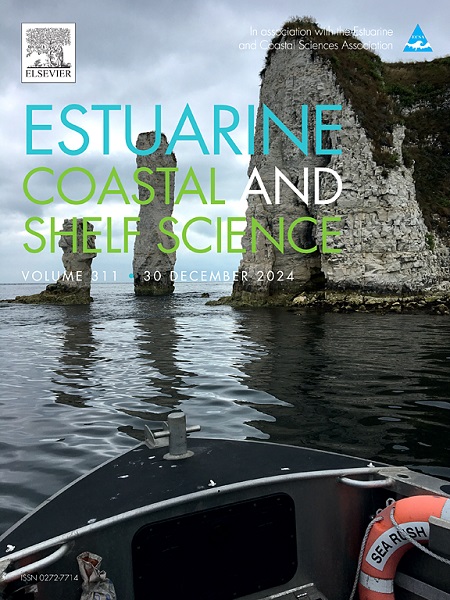Mercury labile and stabile fractions in marine sediments from the Spitsbergen region
IF 2.6
3区 地球科学
Q1 MARINE & FRESHWATER BIOLOGY
引用次数: 0
Abstract
Mercury (Hg) is one of the most toxic metals found in the natural environment, it is a highly reactive element and remains in the environment biomagnifying in trophic chains. The presence of volatile mercury, which has a tropospheric half-life of several months, makes it persist in the atmosphere long enough to be transported long distances polluting the polar regions. Runoff from melting glaciers and geological weathering of the bedrock also have a significant impact on mercury concentrations in the region. Glacier-fed rivers reach the studied fjords, transporting pollutants from these sources, and the Norwegian Sea is a marginal sea. The purpose of this study was to determine the processes and transformations of mercury fractions in sediment cores from Spitsbergen fjords. Eleven bottom sediment cores collected in Kongsfjorden and Hornsund fjords were studied. The sediment samples were analysed by thermodesorption using a DMA-80 direct mercury analyzer (Milestone). Analysis of the processes in the sediment cores and the percentage of the Hg fraction makes it possible to determine the fate of mercury in the Arctic environment. An important feature of the mercury speciation profiles at all stations studied is the dominance of stable fractions. Both diagenesis processes occurring in the sediments involving the transformation of labile fractions into stable fractions and the direct delivery of these fractions to the bottom sediments are responsible for this. The location of the station, including its distance from the glaciers, as well as its depth, was an important factor determining the concentration and proportion of mercury fractions in bottom sediments in the study area. Understanding the fate of mercury in the Arctic environment helps identify its sources and predict further changes, which are strongly influenced by the changing climate. The conducted study indicates that the process of melting glaciers, as a secondary source of pollutants, increases its importance in supplying them to the marine environment.
斯匹次卑尔根地区海洋沉积物中汞的不稳定组分和不稳定组分
汞(Hg)是自然环境中毒性最大的金属之一,它是一种高活性元素,并在生态环境中通过营养链进行生物放大。挥发性汞的存在,对流层的半衰期为几个月,使其在大气中持续存在足够长的时间,可以长距离运输,污染极地地区。冰川融化的径流和基岩的地质风化也对该地区的汞浓度产生重大影响。冰川注入的河流到达研究的峡湾,从这些源头运送污染物,挪威海是一个边缘海。本研究的目的是确定斯匹次卑尔根峡湾沉积物岩心中汞组分的过程和转化。研究了在Kongsfjorden和Hornsund峡湾收集的11个底部沉积物岩心。沉积物样品采用DMA-80直接汞分析仪(Milestone)进行热解吸分析。对沉积物岩心的过程和汞组分的百分比进行分析,可以确定汞在北极环境中的命运。各监测站汞形态剖面的一个重要特征是稳定组分占主导地位。发生在沉积物中的不稳定组分向稳定组分转化的成岩作用和这些组分直接向底部沉积物输送的成岩作用是造成这一现象的原因。该站的位置,包括它与冰川的距离,以及它的深度,是决定研究区域底部沉积物中汞组分浓度和比例的重要因素。了解汞在北极环境中的命运有助于确定其来源并预测受气候变化强烈影响的进一步变化。所进行的研究表明,冰川融化的过程作为污染物的次要来源,在向海洋环境提供污染物方面更加重要。
本文章由计算机程序翻译,如有差异,请以英文原文为准。
求助全文
约1分钟内获得全文
求助全文
来源期刊
CiteScore
5.60
自引率
7.10%
发文量
374
审稿时长
9 months
期刊介绍:
Estuarine, Coastal and Shelf Science is an international multidisciplinary journal devoted to the analysis of saline water phenomena ranging from the outer edge of the continental shelf to the upper limits of the tidal zone. The journal provides a unique forum, unifying the multidisciplinary approaches to the study of the oceanography of estuaries, coastal zones, and continental shelf seas. It features original research papers, review papers and short communications treating such disciplines as zoology, botany, geology, sedimentology, physical oceanography.

 求助内容:
求助内容: 应助结果提醒方式:
应助结果提醒方式:


